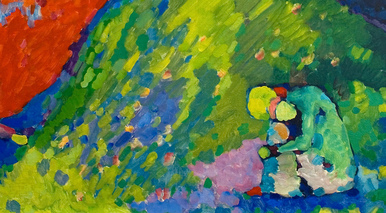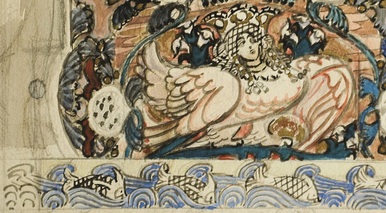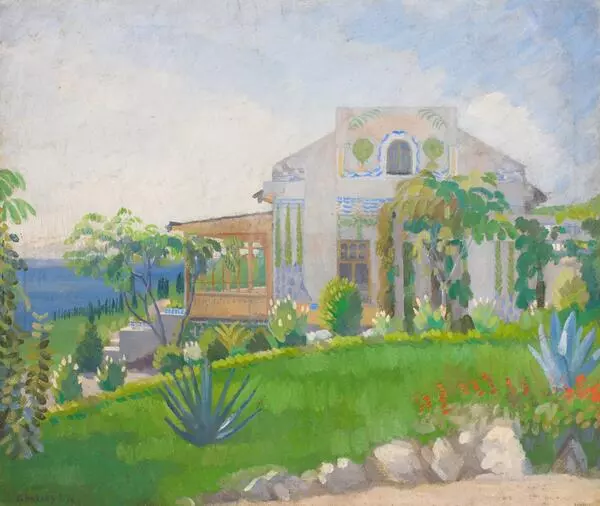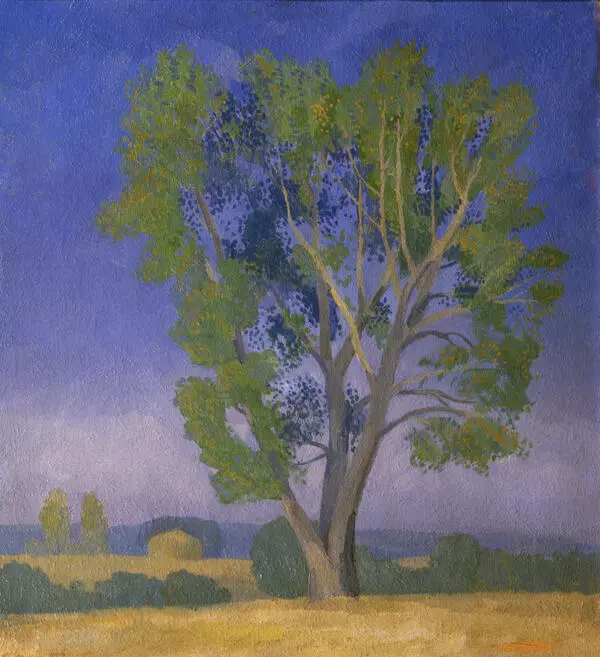Russian symbolist painter Pyotr Utkin was born in Tambov in 1877. His artistic career began in Saratov where he attended the Art Achool of the Saratov Society of Fine Arts and after that the Bogolyubovo Art College. There Utkin studied under painter Borisov-Musatov, a master of symbolic paintings, whose works influenced him a lot.
At the end of the 19th – early 20th century Pyotr Utkin became a student of the Moscow School of Painting, Sculpture and Architecture where he studied under Isaak Levitan, Leonid Pasternak, Valentin Serov and Konstantin Korovin.
In the 1900s, Utkin took part in the exhibitions of the Blue Rose and the Scarlet Rose associations, where he made a name as a successful and original painter. According to Isaak Brodsky, he became well-known in the Russian art as ‘a deep-feeling landscape master’. Like many other members of the Blue Rose association, Utkin was eager to create a peculiar dreamworld and to make the dream of spiritual harmony come true.
Art historians often characterize Utkin’s works as “dream-paintings”. The destruction of the aesthetic values that took place in the post-revolutionary Russian art didn’t influence the painter’s artistic view – he continued to paint illusory masterpieces filled with lyricism.
Utkin painted the picture A blue landscape in the 1910s. It depicts a quiet and cool country evening. The painter used his favorite color scheme – Utkin called it “the moon palette”. The vivid red light coming from the open door of the house stands out against the blue background increasing the brightness of the painting as if it was “lit up” from within.
In the mid-1920s Pyotr Utkin began to teach. Mikhail Arinin, Boris Milovidov, Yevgeny Yegorov, Vladimir Kashkin and other famous Russian painters studied under him. Due to the intensive teaching activity Utkin could not find much time for painting, that is why he painted less at that period than in the pre-revolutionary years. The 1930s works by Utkin have not survived to this day: they disappeared without a trace in the besieged Leningrad.
At the end of the 19th – early 20th century Pyotr Utkin became a student of the Moscow School of Painting, Sculpture and Architecture where he studied under Isaak Levitan, Leonid Pasternak, Valentin Serov and Konstantin Korovin.
In the 1900s, Utkin took part in the exhibitions of the Blue Rose and the Scarlet Rose associations, where he made a name as a successful and original painter. According to Isaak Brodsky, he became well-known in the Russian art as ‘a deep-feeling landscape master’. Like many other members of the Blue Rose association, Utkin was eager to create a peculiar dreamworld and to make the dream of spiritual harmony come true.
Art historians often characterize Utkin’s works as “dream-paintings”. The destruction of the aesthetic values that took place in the post-revolutionary Russian art didn’t influence the painter’s artistic view – he continued to paint illusory masterpieces filled with lyricism.
Utkin painted the picture A blue landscape in the 1910s. It depicts a quiet and cool country evening. The painter used his favorite color scheme – Utkin called it “the moon palette”. The vivid red light coming from the open door of the house stands out against the blue background increasing the brightness of the painting as if it was “lit up” from within.
In the mid-1920s Pyotr Utkin began to teach. Mikhail Arinin, Boris Milovidov, Yevgeny Yegorov, Vladimir Kashkin and other famous Russian painters studied under him. Due to the intensive teaching activity Utkin could not find much time for painting, that is why he painted less at that period than in the pre-revolutionary years. The 1930s works by Utkin have not survived to this day: they disappeared without a trace in the besieged Leningrad.





